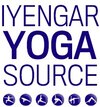Continuing with Prashantji’s concept of Will Power from my last blog, let’s revisit the Will to Know. When we know about a topic we are more proficient in that area and are able to do that particular task better. Whether it is making a vase, cooking a delicious dish, or practicing an asana, if we know more the quality improves. In asana, self study is a major component of our practice. We get to know a pose in depth with an introspective attitude.
Scientific, Technological or Yogic Mind
Our grey matter gets involved with cognitive activity, ego activity, logic, deliberation, and synthesis when we practice. As you may recall, the scientific and technological mind is typically only interested in effect, a materialistic approach. The yoga mind has an eye on consciousness and is interested in cause, effect and consequences, a philosophical holistic approach. The impact of yoga sets in when you are consequence minded rather than effect minded. The question is, are you practicing sagaciously, with wisdom? Or are you only practicing with your ability?
Will to Become
Yoga will evolve your consciousness when you work in a sagacious manner. Once we have practiced the will to do (involves the ego and the body) and the will to know (involves the mind), we evolve into the will to become. We cannot be trained to evolve, we can only get prepared with practice. Once we have put in the time and become a seasoned practitioner, then we evolve and change. When we get to this level we discover that we have become. We are being rather than doing.
Will to Be
The breath has a philosophers mind, prospective, vision and is the bridge to a philosophical culture. Engaging breath awareness, breath activity culture, breath sensitivity culture will help you go for this negotiation. When we work in an asana we have to reach a certain plane. If we get caught in a technicality of doing dynamics then we will never be close to the essential asana. We have to reach a certain level of preparedness, and this means watching something steady. If you are caught in the posture and constantly doing something all the time, doing, doing, doing, you are constantly hurling pebbles into the lake of consciousness and that lake will never become steady. The ripples keep emanating. As if we get caught in the bewitching, beautiful, pearl necklace and don’t bother about the thread which runs through it at all.
When you come to a particular level of becoming, the being will be there. When we are prepared we evolve from the will to do, to the will to maintain, to the will to know, to the will to become, to the will to be.



